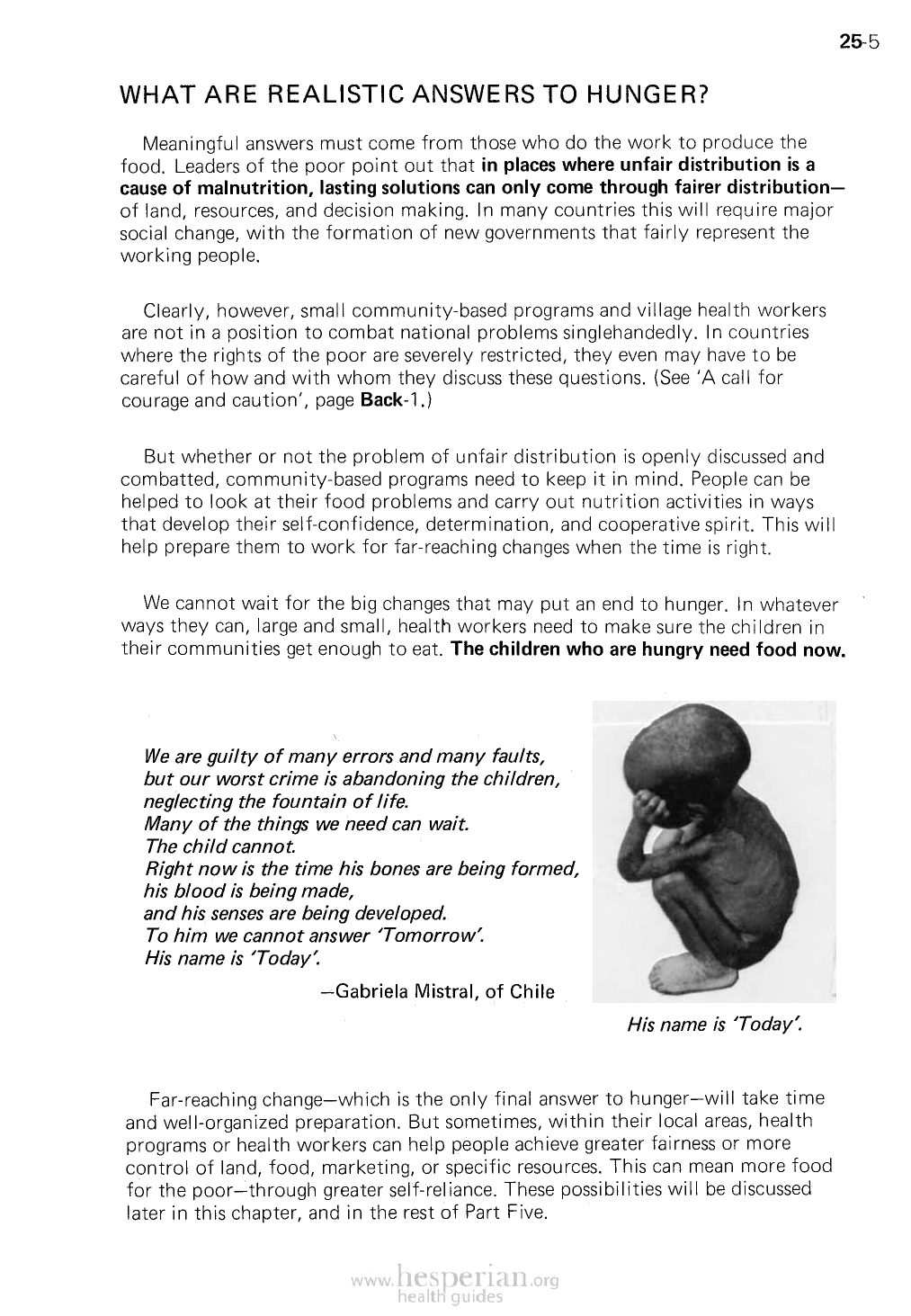
25-5
WHAT ARE REALISTIC ANSWERS TO HUNGER?
Meaningful answers must come from those who do the work to produce the food.
Leaders of the poor point out that in places where unfair distribution is a cause
of malnutrition, lasting solutions can only come through fairer distribution—
of land, resources, and decision making. In many countries this will require major
social change, with the formation of new governments that fairly represent the
working people.
Clearly, however, small community-based programs and village health workers
are not in a position to combat national problems singlehandedly. In countries
where the rights of the poor are severely restricted, they even may have to be
careful of how and with whom they discuss these questions. (See ‘A call for
courage and caution’, page Back 1.)
But whether or not the problem of unfair distribution is openly discussed and
combatted, community-based programs need to keep it in mind. People can be
helped to look at their food problems and carry out nutrition activities in ways that
develop their self-confidence, determination, and cooperative spirit. This will help
prepare them to work for far-reaching changes when the time is right.
We cannot wait for the big changes that may put an end to hunger. In whatever
ways they can, large and small, health workers need to make sure the children in their
communities get enough to eat. The children who are hungry need food now.
We are guilty of many errors and many
faults, but our worst crime is abandoning
the children, neglecting the fountain of life.
Many of the things we need can wait.
The child cannot.
Right now is the time his bones are being
formed, his blood is being made, and his
senses are being developed.
To
h i m w e c a n n o t answer
‘Tomorrow’. His nam—eGisab‘Troiedlaay’.
Mistral, of Chile
His name is ‘Today’.
Far-reaching change—which is the only final answer to hunger—will take time
and well-organized preparation. But sometimes, within their local areas, health
programs or health workers can help people achieve greater fairness or more
control of land, food, marketing, or specific resources. This can mean more food for
the poor—through greater self-reliance. These possibilities will be discussed later in
this chapter, and in the rest of Part Five.